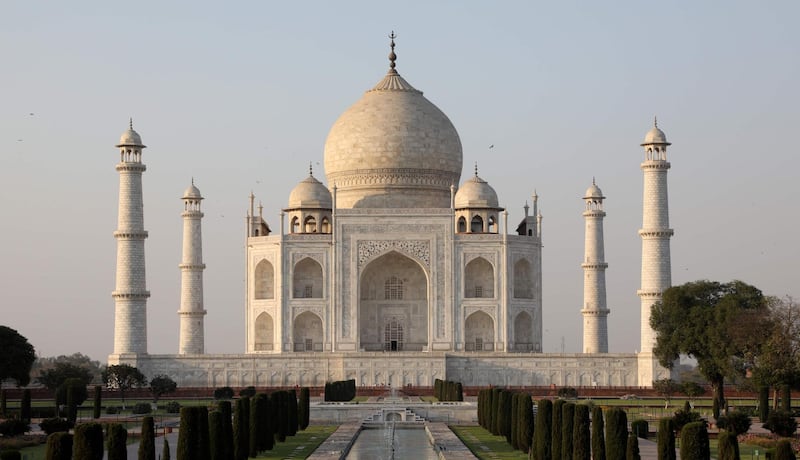The Taj Mahal’s pristine white marble, having turned yellow with grime, is now passing into a mysterious shade of green-brown — a fact that has caught the Supreme Court’s attention.
On Tuesday, a two-judge bench of the court scolded the government, pointing out that its ongoing renovation of the Taj seemed to be causing this change in colour.
“We don’t know whether you have, or perhaps don’t have, the expertise,” M B Lokur and Deepak Gupta, the two judges, said in a statement.
“Even if you have the expertise, you are not utilising it. Or perhaps you don’t care.”
The judges were responding to a petition filed by M C Mehta, one of India’s most eminent environmental lawyers and an advocate of the Taj’s conservation for nearly three decades.
Mr Mehta’s original petition in the court, seeking government action to protect the Taj Mahal from pollution and its surroundings from deforestation, dates to 1984. The case has never been resolved or concluded; instead, the court has kept the petition open, using it to monitor the government’s care of the Taj Mahal on an ongoing basis.
Last month, at a fresh hearing of the petition, Mr Mehta pleaded that the state of the Taj Mahal — a Unesco World Heritage site, and one of the most iconic sights on the planet — was dismal, and he submitted photographs of the discoloured marble walls for the judges to examine.
Since the summer of 2015, the Archaeological Survey of India has been engaged in cleaning the Taj Mahal, whose outer walls had been yellowed by airborne pollution and by the excretions of insects rising from the nearby Yamuna river.
Read more: Taj Mahal's dome leaves cleaners with a quandary
Agra, the city in which the Taj Mahal is located, sits within an industrial belt, and its air pollution levels have risen sharply over the past 30 years. On Wednesday, a new air pollution database released by the World Health Organisation showed that Agra ranked eighth in the list of cities with filthiest air.
The pollution in the Yamuna has also fuelled growing numbers of insects, whose excretions, along with the air’s impurities, stained the Taj Mahal an ugly yellow.
Restorers from the ASI have been using a paste of Fuller’s Earth, a clay mineral, to clean the marble. The mineral pulls impurities from the surface into itself, and can then be washed off with water, Bhuvan Vikrama, the ASI’s Agra superintendent, said.
The Fuller’s Earth treatment is recommended by organisations such as the Natural Stone Institute, an international trade association that represents the stone industry. But with the Taj Mahal in particular, the treatment was rediscovered in old Mughal records, which showed that mud packs were regularly used to clean monuments.
In tests run by Indian archaeologists a decade ago, a poultice of Fuller’s Earth absorbed sulphate and carbonate impurities from marble.
Mr Vikrama would not comment on the court’s remarks made on Tuesday. He said, however, that using Fuller’s Earth was a “safe, non-chemical way of cleaning”.
“It’s a slow process,” he said. “When the mud dries, it uses capillary action to pull the impurities up, and it takes time for the mud to dry. That way, the maximum amount of dirt can be extracted.”
Mr Mehta’s photos showed that the marble’s white shade was still missing, even on the sections where Fuller’s Earth had already been used. “First it was yellow, and now it is becoming brown and green,” the judges observed.
Thus far, all the experts who have been recruited to work on the Taj Mahal’s conservation have been Indian, and the court suggested that these experts were proving insufficient. “If you’re unable to get to the root of it … perhaps we need some expert organisation from outside India,” the judges said.
The next hearing in the case is scheduled for May 9.





